The Tyne Valley’s principal town rears above the river on a wooded plateau like an Italianate village. Only Hexham’s 13th-century abbey tower and tallest stone buildings break the canopy, leaving most of the old stone streets hidden from view.
On entering the marketplace – a busy square with a higgledy mix of Victorian, Georgian and medieval buildings – it is clear why this Northumberland treasure was once voted England’s favourite market town by Country Life magazine. The criteria were charm, accessibility and sense of community, all of which are apparent to the visitor.
What to see and do in Hexham
Marvel at Hexham Abbey
You may find the view of the abbey from the street a little underwhelming, but wait until you step through the door. What appears from the outside to be a rather stout, manly building with a squat tower, is elegant and lofty inside.
Founded in 674 AD by Wilfrid, Bishop of York, the abbey was originally built as a monastery, but very quickly became a church. It was said by a follower of Wilfrid’s (Eddius Stephanus) to be of greater beauty than anything ‘this side of the Alps’. Today, the only surviving part of Wilfrid’s wondrous building is the crypt, reached by descending a stone staircase in the nave.
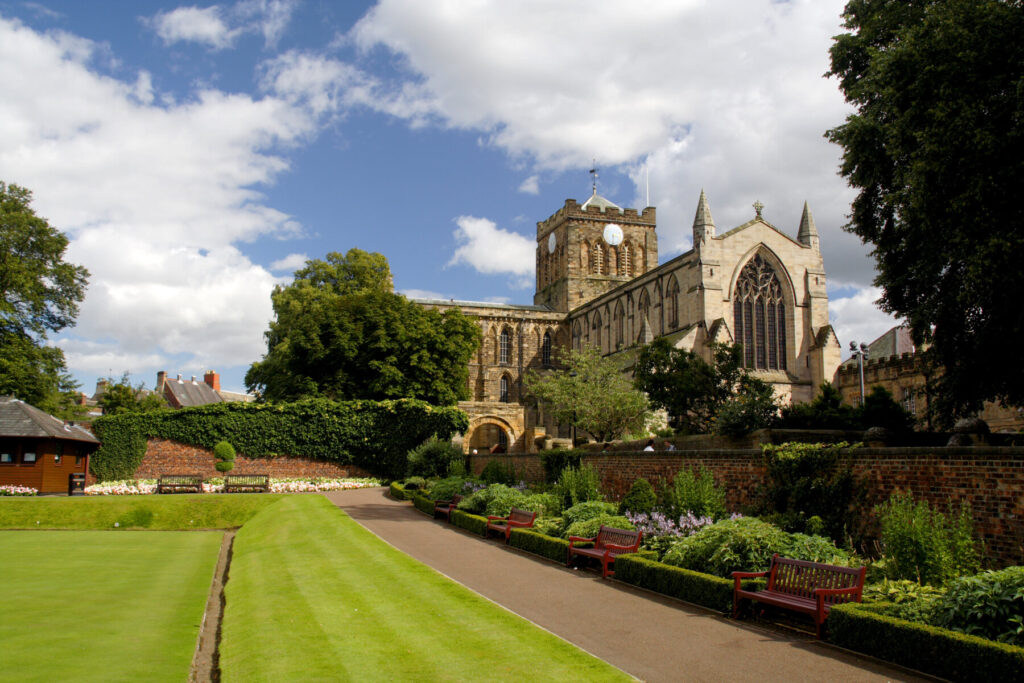
Most of what you see today dates to the 12th and 13th centuries. The best vantage point inside is from the broad stone staircase in the south transept. The Night Stair used to lead to the canons’ dormitory and today provides visitors with a superlative view of the crossing and choir. Lancet windows in the north transept and the three tiers of arched windows opposite drive the walls skywards, creating a sense of space and height.
Many more treasures are found in the aisles and around the altar, including an Anglo-Saxon chalice and a frith stool (a bishop’s throne) that may have been built for Wilfrid in the 7th century. A number of Saxon grave covers and rare medieval wood-panel paintings are also nearby. In the chancel, you’ll find the Dance of Death painted across four panels and above the altar in the Leschman Chantry Chapel is an unusual wood painting of Christ emerging from a coffin.
Take a moment to relax on the Sele
Twenty acres of green space surround the abbey on all but one of its sides, divided into three distinct areas: the Abbey Grounds with its 20th-century bandstand; a large open area of grassland called the Sele; and the gardens and bowling green in front of the Georgian mansion, Hexham House. Visitors won’t struggle to find a tranquil corner to put down a picnic rug.
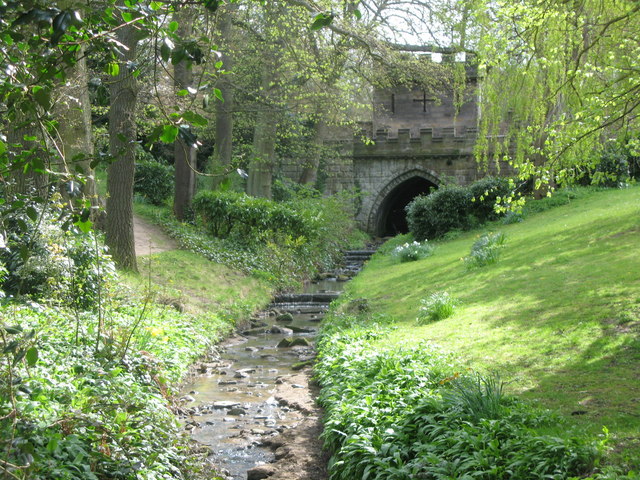
To the side of the bowling green is a wooded area with a lively burn that trickles through a 13th century archway and under the boughs of oak and fir trees. A pleasant circular stroll follows the burn uphill past the bandstand on your left and the Sele on your right. At the top of the parkland, a secluded narrow passage on your left, called Seal Terrace, leads past a row of diminutive early 19th-century cottages.
Stroll through the old town
The stonking walls of the Moot Hall – a tower house dating to at least the early 15th century – demand attention. Once a courthouse, it now has many functions, including hosting weddings and an art gallery. A vaulted passageway leads to Hallgate and Hexham Old Gaol. Where the road winds round the side of the gaol, you’ll find a couple of fine art galleries and a coffee house with a garden butting up against the prison walls.
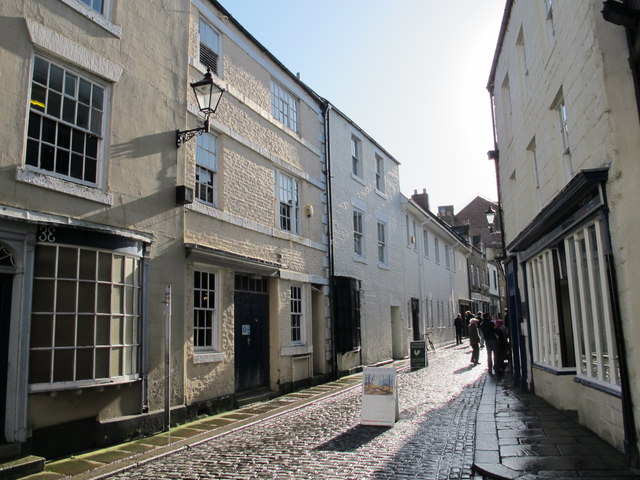
One of the most fascinating streets in Hexham, St Mary’s Chare, is tucked away down a passageway opposite next to a clock repair shop. It stands on the site of an old chapel from which the street gets its name. Go through the alley and then turn around at the old-fashioned sweet shop to see the outline of one of the chapel’s windows. The cobbled lane ahead has many Victorian shopfronts housing independent cafés and shops including Cogito Books, recommended for local guides, OS maps and its children’s area.
Hidden somewhat to the side of a narrow alley is another enchanting clock repair shop. Grandfather clocks stand in the passageway ticking away the days. Running parallel to St Mary’s Chare is Fore Street, a busier pedestrian street with an equal number of old shopfronts, but fewer independent businesses. The Old Pharmacy is a curious building: its black and red frontage with decorative grapevines was designed by a Belgian refugee in 1916 and looks incongruous – and far too special to be a high street clothing store.
Soak up the atmosphere at the Shambles
A wander through the streets radiating from the marketplace reveals the shops and industries of bygone times. The prominent stone-pillared shelter in the square is known as the Shambles – a medieval meat market.
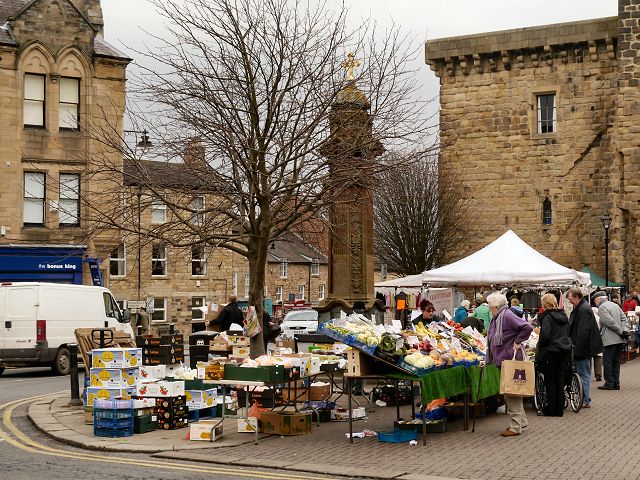
Goods are still sold here but you are more likely to find potted plants and clothes. A farmers’ market runs on the second and fourth Saturday of the month.
Pick up a souvenir on Market Street
Snaking downhill from the marketplace is Market Street – a road with many jewellers and hairdressers and the huge antiques emporium, Ashbourne House Antiques, which is stuffed with china, bric-a-brac, copper pots, furniture and architectural salvage. You can find anything here, from a cast iron Victorian radiator to a hookah pipe.
Continuing downhill, Market Street soon becomes Gilesgate. Look out for a narrow alley on your left just past Bouchon Bistrot restaurant. Where now you see a large courtyard, car park and a shallow stream, until the 1920s animal skins were soaked in large tanning pits here to produce leather gloves. An information panel does a good job of making sense of what you can still see today.
Brush up on your history at Hexham Old Gaol
‘No, people weren’t sent here to be punished,’ the steward at the oldest purpose-built prison in England (completed 1333) says, correcting my false assumption. ‘This was a holding cell until suspected criminals were tried. If found guilty, then they were punished.’
It’s hard to see how being kept in a windowless stone cellar living on scraps of charity food for sometimes over a year (trials of prisoners were only held every quarter so you can imagine the backlog of cases) cannot be seen as a punishment. Perhaps that is why records show that 75% of prisoners in the Middle Ages were found not guilty when they were shackled and walked the few hundred yards to the Moot Hall where they were brought before a judge. For the remaining 25% stocks, the ducking stool, branding and the whipping post were some of the punishments they could expect – if they weren’t hanged.
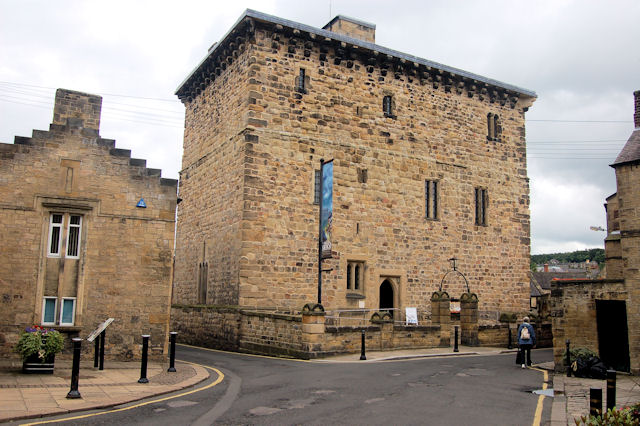
The gaol was in use until the 1820s. The stone tower, made with hugely thick walls, has four levels open to visitors. Each floor has an exhibition room dedicated to a different aspect of local history: the Border Reivers, rural life and the history of the gaol itself. The dungeon is reached by way of a glass lift that doesn’t open but pauses long enough for visitors to gawp at the impenetrable walls and imagine being imprisoned in the cold, dark surroundings
Eating and drinking in Hexham
The Rat Inn
Ask a local which is their favourite country pub around here and chances are they’ll rave about this old drovers’ inn (low beamed ceiling, flagstone floors) commanding a tranquil spot high above the Tyne. Enjoy exceptional, good-value food made with the very best Northumbrian farm meats, and fish from the North Sea (eg: coley fillet and chips, venison with rhubarb, and trout served with a samphire, pancetta and mussel broth).
Listed on a blackboard is the provenance of cuts of meats (all of them local and sold by the ounce; once purchased they are struck off the board). The interior is not at all fancy – in fact it is all a bit of a mishmash of styles and furnishings – but this is a laid-back pub with no pretentions, despite the impressive menu.
Dipton Mill Inn
This small old drovers’ pub and 17th-century former mill is set by a secluded wooded river on the outskirts of Hexham. It’s a traditional country inn in every way (low ceilings, a couple of real fires lit for most of the year and a lot of brassware about).
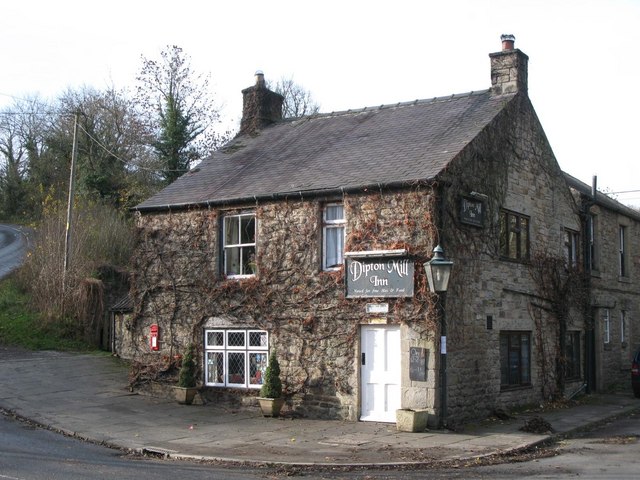
Beers come from the landlord’s Hexhamshire Brewery. The food is reasonable: mainly meat dishes including mince and dumplings, pie, steaks, as well as sandwiches, and old-fashioned British puddings.
Bouchon Bistrot
Upmarket traditional French restaurant with a burgundy interior and starched white tablecloths. Starters include scallops, escargots and tartiflette; and stone bass, guinea fowl and steak frites for mains (which cost in the region of £18).
More information
For more information, check out Gemma Hall’s guide: